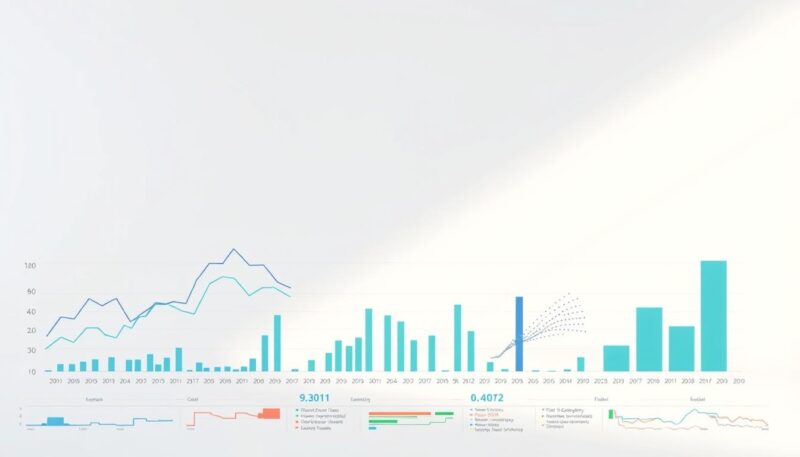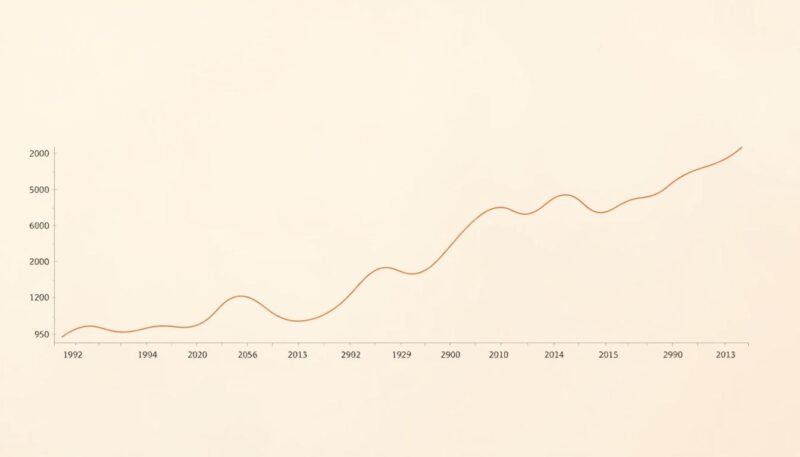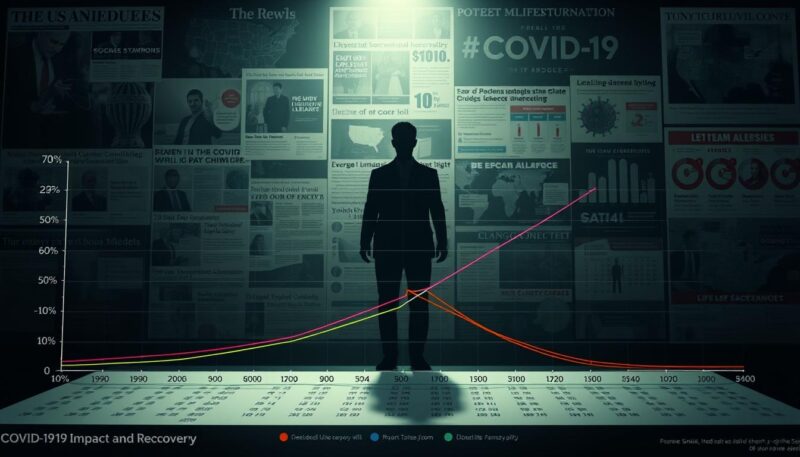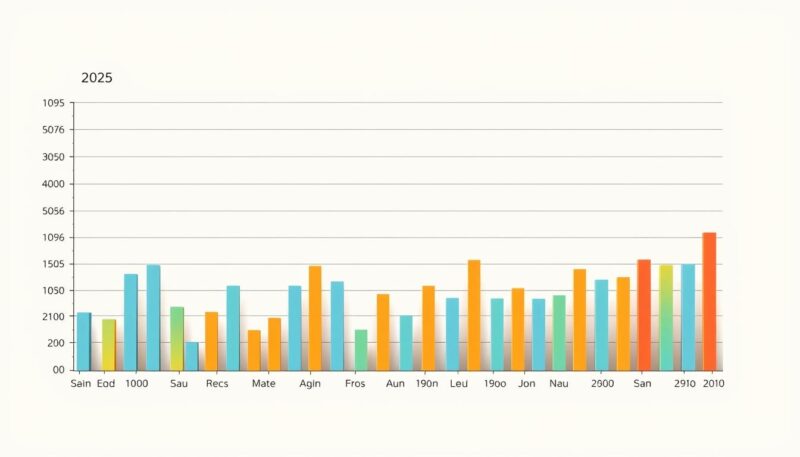Recent data indicates that life expectancy in the United States has seen a resurgence after the significant decline caused by the COVID-19 pandemic. Between 2019 and 2022, the U.S. experienced a sharper decline and a slower rebound in life expectancy compared to peer countries, largely due to increased mortality rates. However, in 2023, life expectancy at birth in the U.S. increased by 0.9 years to 78.4 years.
For more information on historical life expectancy trends, you can explore the data on US life expectancy trends, which provides insights into the fluctuations over the years. Despite the recovery, the U.S. still lags behind comparable countries, with an average life expectancy of 82.5 years.
Key Takeaways
- Life expectancy in the U.S. saw a significant increase in 2023, reaching 78.4 years.
- The U.S. still trails behind comparable countries in life expectancy.
- Mortality rates and health trends vary significantly across different states.
- Gender differences continue to play a crucial role in life expectancy.
- Regional patterns highlight areas of concern within the U.S. healthcare system.
The Current State of US Life Expectancy
Recent data on US life expectancy reveals a nuanced picture, with improvements in some areas but persistent gaps in others. In 2023, life expectancy at birth in the US increased to 78.4 years, up 0.9 years from 77.5 years in 2022. However, this is still lower than the pre-pandemic estimate of 78.8 years in 2019.
2023-2024 Life Expectancy Figures
The most recent data shows that while US life expectancy has increased, it remains 4.1 years below the average of comparable developed nations, which stands at 82.5 years. This gap highlights persistent systemic issues in American healthcare and public health. The 2023-2024 period has shown signs of recovery following the dramatic declines during the COVID-19 pandemic, with mortality rates decreasing across most demographic groups.
Post-Pandemic Recovery Trends
Post-pandemic recovery trends indicate uneven improvement across states, with some regions rebounding more quickly than others based on vaccination rates, healthcare access, and public health measures. Despite significant healthcare spending, the US continues to lag behind other high-income countries in life expectancy gains, suggesting structural issues beyond just healthcare delivery. Recent improvements in life expectancy have been primarily driven by declining COVID-19 mortality, though other causes of death, including heart disease, cancer, and drug overdoses, continue to impact overall figures.
As noted by a health expert, “The recovery in life expectancy is a positive sign, but the persistent gap between the US and other developed countries is a concern that needs to be addressed through comprehensive healthcare reforms.”
US Life Expectancy Compared to Global Standards
Comparing US life expectancy to global standards highlights a persistent gap. The United States has a lower life expectancy compared to other developed countries, sparking concerns about the effectiveness of its healthcare system.
The 4.1-Year Gap with Comparable Countries
The US maintains a 4.1-year life expectancy gap compared to other high-income countries. Americans live to 78.4 years on average, whereas comparable nations have an average life expectancy of 82.5 years. This disparity is a significant concern, as it indicates that the US is not achieving the same health outcomes as its peer countries.
According to a report by Health System Tracker, the US has the lowest life expectancy among its peer nations. This is despite having the highest per-person healthcare spending, reaching an estimated $13,432 per capita in 2023.
| Country | Life Expectancy (Years) | Healthcare Spending per Capita ($) |
|---|---|---|
| United States | 78.4 | 13,432 |
| Comparable Countries Average | 82.5 | 7,000 |
Healthcare Spending vs. Life Expectancy Outcomes
The paradoxical relationship between high healthcare spending and poor longevity outcomes in the US suggests fundamental issues in how healthcare resources are allocated and accessed. Despite spending nearly twice as much on healthcare per capita as other developed countries, the US ranks last in life expectancy among its peer nations.

The divergence in life expectancy between the US and other developed nations began in the 1990s and has accelerated over time. While other wealthy nations have seen steady increases in life expectancy corresponding with healthcare investments, the US has experienced periods of stagnation and even decline despite escalating healthcare costs.
Geographic Disparities: Life Expectancy by State
Geographic analysis of life expectancy in the U.S. shows a diverse range of state-level outcomes. This variation is significant, with life expectancy differing by up to 7 years between the highest and lowest-ranking states.
Highest and Lowest Ranking States
States in the Northeast and on the West Coast consistently rank highest in life expectancy. In contrast, states in the Southeast and parts of the Midwest show the lowest life expectancy figures. These regional patterns are strongly correlated with socioeconomic factors, healthcare access, educational attainment, and state-level health policies.
Regional Patterns and Variations
The gap between the highest and lowest-ranking states has widened in recent years, indicating growing inequality in health outcomes across different regions. Even the highest-performing U.S. states fall below the average life expectancy of comparable developed nations, highlighting a nationwide issue rather than just regional challenges. Rural areas within states typically show lower life expectancy than urban centers, reflecting disparities in healthcare access, economic opportunity, and health-promoting infrastructure.
Recent data has revealed concerning trends in specific mortality measures, including rising maternal mortality rates and increasing death rates among children and adolescents in certain states. These findings underscore the need for targeted interventions to address the root causes of these disparities and improve overall life expectancy across the U.S.
The Gender Gap in US Life Expectancy
The US experiences a considerable gender gap in life expectancy, with women averaging 81.1 years compared to 75.8 years for men. This difference highlights a broader trend where women generally live longer than men, a phenomenon observed not just in the US but across many developed countries.
Understanding the 5.3-Year Difference
The 5.3-year gap in life expectancy between men and women in the US is influenced by multiple factors. Biological advantages for women, higher rates of risky behaviors among men, and differences in healthcare utilization all contribute to this disparity. For instance, men are more likely to engage in behaviors that increase the risk of death, such as smoking and reckless driving, which can significantly impact their life expectancy.
Additionally, the prevalence of heart disease is higher in men, which is a major cause of mortality. These factors combined create a significant difference in life expectancy between the genders.

How the US Gender Gap Compares Internationally
While the US is not alone in experiencing a gender gap in life expectancy, the 5.3-year difference is larger than in many other developed nations. On average, comparable countries have a gender gap of approximately 4.3 years. The COVID-19 pandemic temporarily widened the gap in the US to 5.8 years due to higher mortality rates among men, though it has since narrowed slightly.
Both American men and women have lower life expectancy compared to their counterparts in other developed countries. However, American men fare particularly poorly in international comparisons, contributing to the wider gender gap observed in the US.
Key Factors Influencing US Life Expectancy
Multiple factors play a crucial role in determining US life expectancy. The interplay of various elements, including health conditions, lifestyle choices, and socioeconomic status, significantly impacts the overall life expectancy of the population.
Impact of Chronic Diseases and Lifestyle Factors
Chronic diseases are among the leading causes of death in the US, significantly affecting life expectancy. Heart disease, cancer, stroke, and diabetes are particularly impactful on mortality rates. The rising prevalence of obesity contributes to reduced life expectancy by increasing the risk for numerous chronic conditions and complicating treatment outcomes. Furthermore, drug overdose deaths, particularly from opioids, have become a major factor reducing life expectancy in certain demographic groups and regions.
Socioeconomic Determinants of Longevity
Socioeconomic factors strongly influence longevity, with research showing that Americans with higher incomes and education levels live significantly longer than those with fewer resources. Income inequality in the US correlates strongly with disparities in life expectancy between different economic groups. Access to healthcare remains uneven, with approximately 8% of Americans lacking health insurance and many more facing inadequate coverage or barriers to care.
| Factor | Impact on Life Expectancy | Demographic Most Affected |
|---|---|---|
| Chronic Diseases | Reduces life expectancy through increased mortality rates | Older adults and those with lower socioeconomic status |
| Lifestyle Factors (Obesity, Smoking) | Increases risk for chronic conditions, complicating treatment outcomes | Individuals with lower education levels and lower income |
| Socioeconomic Factors (Income, Education) | Impacts access to healthcare and health outcomes | Lower-income populations and minority groups |
The complex interplay of these factors underscores the need for a multifaceted approach to improving US life expectancy. Addressing both health conditions and socioeconomic determinants is crucial for enhancing longevity and reducing mortality rates.
Historical Trends in US Life Expectancy
The historical trends in US life expectancy reveal a complex pattern of growth and decline over the past few decades. Life expectancy is a critical indicator of a nation’s overall health and wellbeing.
From 1980 to 2010, US life expectancy showed steady growth, increasing from approximately 73.7 years to 78.7 years during this three-decade period. This growth was largely driven by improvements in healthcare and living standards.
Long-term Growth Patterns
The long-term growth patterns in US life expectancy from 1980 to 2019 were characterized by a steady increase, with some fluctuations. However, the rate of improvement began to lag behind other developed nations in the 1990s.
- The US life expectancy growth rate slowed down significantly after 2000, with the gap widening compared to other developed countries.
- Between 2010 and 2019, US life expectancy growth essentially stagnated, increasing by only 0.1 years compared to an average 1.2-year increase in peer countries.
Recent Stagnation and Decline
The period from 2014 to 2017 saw three consecutive years of declining life expectancy in the US, an unprecedented development in a developed nation during peacetime.
This decline was largely driven by “deaths of despair” – fatalities from drug overdoses, alcohol-related liver disease, and suicide – particularly among middle-aged white Americans without college degrees.

The COVID-19 pandemic caused the largest single-year drop in US life expectancy since World War II, with a decline of 1.8 years in 2020, followed by a further decline in 2021 while other countries began to recover.
Historical analysis reveals that while other developed nations experienced temporary declines in life expectancy during specific health crises, the US pattern of stagnation and decline over multiple years indicates deeper structural issues.
The COVID-19 Impact and Recovery
The COVID-19 pandemic caused a drastic reduction in US life expectancy, with a decline of 1.8 years in 2020 and a further drop in 2021. This significant decrease was the largest two-year decline since the 1921-1923 influenza pandemic, highlighting the severity of the COVID-19 crisis.

Pandemic-Related Mortality Effects
The pandemic led to higher excess mortality rates in the US compared to other developed countries. Approximately 1.1 million COVID-19 deaths were recorded through early 2023, with pandemic mortality disproportionately affecting racial and ethnic minorities. Black and Hispanic Americans experienced significantly higher death rates than white Americans, widening existing health disparities.
- The US had a higher rate of excess mortality per capita and a larger increase in premature mortality per capita than peer countries.
- Pandemic mortality effects were not limited to direct COVID-19 deaths but also included secondary impacts such as delayed medical care and mental health issues.
Post-Pandemic Rebound Patterns
The post-pandemic recovery in life expectancy began in 2022 and strengthened in 2023. The latest data shows a 0.9-year increase, bringing US life expectancy to 78.4 years. However, recovery patterns varied significantly by state, influenced by factors such as vaccination rates and healthcare system resilience.
While the US life expectancy started to rebound in 2022, it stabilized in peer countries. The difference in recovery patterns highlights the varying effectiveness of pandemic responses and public health measures across different regions.
Projected US Life Expectancy for 2025
Statistical models are being used to forecast US life expectancy for 2025, providing insights into the potential trends and changes in longevity across different states and demographic groups.
Statistical Models and Predictions
Statistical models project that US life expectancy will reach approximately 79.2 years by 2025, assuming continued recovery from pandemic effects and the absence of major new health crises. These projections incorporate data on current mortality trends, demographic shifts, medical advances, and public health initiatives to forecast future life expectancy patterns.
- Age-specific mortality improvements are expected to vary, with continued gains at older ages but persistent challenges in reducing premature mortality among working-age adults.
- Population aging will influence these projections, as the large baby boomer generation reaches ages with higher mortality rates, potentially affecting overall life expectancy calculations.

Anticipated State-by-State Variations
State-by-state projections for 2025 show continued geographic disparities, with up to a 7-year difference between the highest and lowest-ranking states. Hawaii, California, Minnesota, and Massachusetts are projected to maintain their positions as states with the highest life expectancy, while Mississippi, West Virginia, and Alabama are expected to continue ranking lowest.
- Demographic groups will likely see different rates of improvement, with some population segments experiencing faster gains than others based on access to healthcare, socioeconomic factors, and regional differences.
- Historical patterns suggest that previous predictions of maximum life expectancy limits have consistently been surpassed, indicating potential for continued improvement beyond current projections.
Conclusion: Addressing the US Life Expectancy Challenge
Life expectancy in the US is a complex issue that requires a multifaceted approach to address the existing gap with peer nations. Despite higher healthcare spending, Americans across all demographic groups die younger than their counterparts in other wealthy nations.
Addressing this challenge necessitates comprehensive policy approaches that focus on healthcare access, social determinants of health, and prevention. Learning from countries with higher life expectancy can provide valuable insights, particularly regarding universal healthcare and preventive care.
Reducing health disparities within the US population is crucial, as addressing the needs of the most vulnerable groups can yield significant gains in national life expectancy. The COVID-19 pandemic highlighted weaknesses in the US health system but also created momentum for reforms.
Progress requires “a regular stream of continuing progress” rather than one-off breakthroughs, necessitating sustained commitment to public health and healthcare improvement.
FAQ
What is the current life expectancy in the United States?
The current life expectancy in the United States varies by state and gender, but overall, it has been impacted by the COVID-19 pandemic and other factors such as chronic diseases and lifestyle choices.
How does US life expectancy compare to other developed countries?
The US has a lower life expectancy compared to other developed countries, with a 4.1-year gap in life expectancy at birth compared to the average of comparable countries.
What are the main factors influencing life expectancy in the US?
Key factors influencing life expectancy in the US include chronic diseases, lifestyle factors, socioeconomic determinants, and access to healthcare.
How has the COVID-19 pandemic affected life expectancy in the US?
The COVID-19 pandemic has had a significant impact on life expectancy in the US, with increased mortality rates and a decline in life expectancy, particularly in certain states and populations.
Are there significant differences in life expectancy across different states in the US?
Yes, there are significant differences in life expectancy across different states in the US, with some states having higher life expectancy rates than others due to various factors such as healthcare access and socioeconomic conditions.
How does life expectancy vary by gender in the US?
There is a notable difference in life expectancy between men and women in the US, with women generally living longer than men, and the gap varying across different states and populations.
What are the projected trends for US life expectancy in 2025?
Projected trends for US life expectancy in 2025 suggest a potential recovery from the pandemic-related decline, but with continued variations across states and populations.
How does healthcare spending in the US relate to life expectancy outcomes?
The US has one of the highest healthcare spending rates globally, but its life expectancy outcomes are not commensurate with this spending, suggesting inefficiencies and disparities in the healthcare system.
